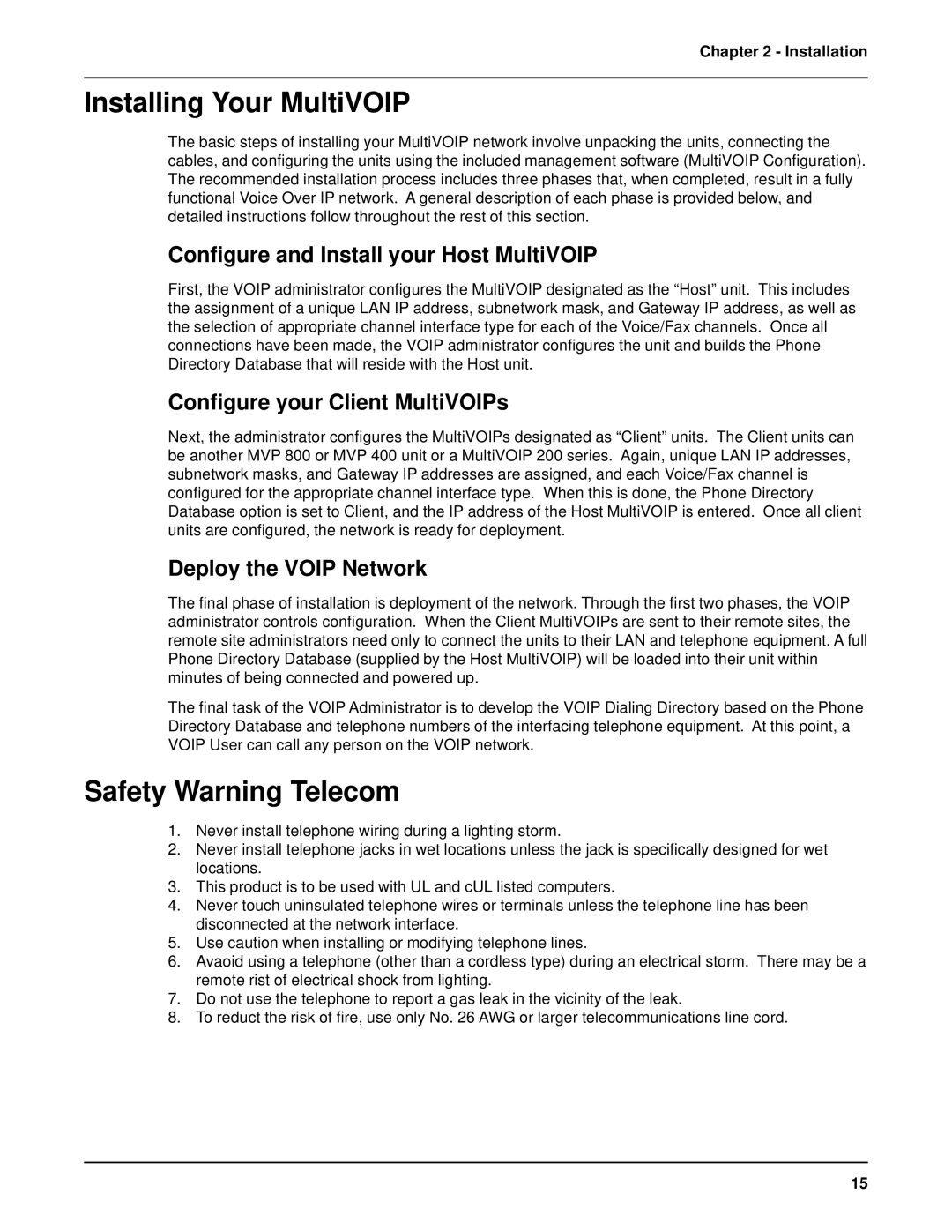
Chapter 2 - Installation
Installing Your MultiVOIP
The basic steps of installing your MultiVOIP network involve unpacking the units, connecting the cables, and configuring the units using the included management software (MultiVOIP Configuration). The recommended installation process includes three phases that, when completed, result in a fully functional Voice Over IP network. A general description of each phase is provided below, and detailed instructions follow throughout the rest of this section.
Configure and Install your Host MultiVOIP
First, the VOIP administrator configures the MultiVOIP designated as the “Host” unit. This includes the assignment of a unique LAN IP address, subnetwork mask, and Gateway IP address, as well as the selection of appropriate channel interface type for each of the Voice/Fax channels. Once all connections have been made, the VOIP administrator configures the unit and builds the Phone Directory Database that will reside with the Host unit.
Configure your Client MultiVOIPs
Next, the administrator configures the MultiVOIPs designated as “Client” units. The Client units can be another MVP 800 or MVP 400 unit or a MultiVOIP 200 series. Again, unique LAN IP addresses, subnetwork masks, and Gateway IP addresses are assigned, and each Voice/Fax channel is configured for the appropriate channel interface type. When this is done, the Phone Directory Database option is set to Client, and the IP address of the Host MultiVOIP is entered. Once all client units are configured, the network is ready for deployment.
Deploy the VOIP Network
The final phase of installation is deployment of the network. Through the first two phases, the VOIP administrator controls configuration. When the Client MultiVOIPs are sent to their remote sites, the remote site administrators need only to connect the units to their LAN and telephone equipment. A full Phone Directory Database (supplied by the Host MultiVOIP) will be loaded into their unit within minutes of being connected and powered up.
The final task of the VOIP Administrator is to develop the VOIP Dialing Directory based on the Phone Directory Database and telephone numbers of the interfacing telephone equipment. At this point, a VOIP User can call any person on the VOIP network.
Safety Warning Telecom
1.Never install telephone wiring during a lighting storm.
2.Never install telephone jacks in wet locations unless the jack is specifically designed for wet locations.
3.This product is to be used with UL and cUL listed computers.
4.Never touch uninsulated telephone wires or terminals unless the telephone line has been disconnected at the network interface.
5.Use caution when installing or modifying telephone lines.
6.Avaoid using a telephone (other than a cordless type) during an electrical storm. There may be a remote rist of electrical shock from lighting.
7.Do not use the telephone to report a gas leak in the vicinity of the leak.
8.To reduct the risk of fire, use only No. 26 AWG or larger telecommunications line cord.
15
